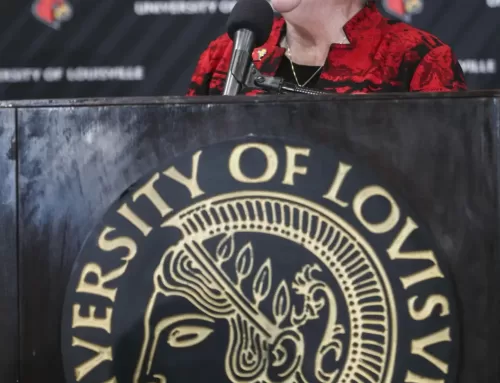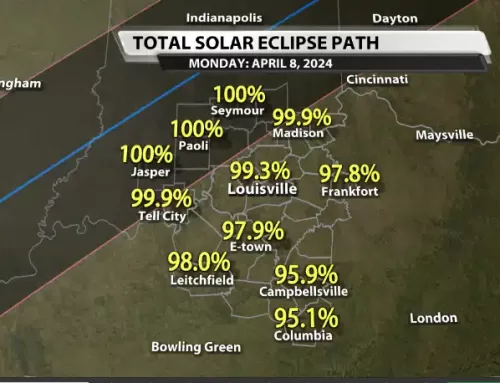
The Louisville Cardinal delved into its archives for the last decade of flood stories concerning the University of Louisville and its interactions with MSD. Now that the Ekstrom library project has reached completion, the university hopes that the Belknap campus will experience distinct reductions in flooding.
By Caitlyn Crenshaw–
U of L has taken advantage of an incentive program offered by the Metropolitan Sewer Department to several institutions to collaborate on improving clean water and reducing flooding occurrences. Larry Owsley, Vice President of Business Affairs for the university, said, “they (MSD) are sponsoring this to reduce the amount of storm water that goes into the sewer system.”
The sewer system, which includes U of L, is the combined infrastructure for storm water and sanitary waste disposal. This system causes overflow at water treatment plants resulting in contaminated water entering the Ohio and Mississippi River when the sewer is filled overcapacity.
An MSD incentive program provides U of L with $1.50 for every square foot of impermeable surface that does not drain rainwater into the sewers.
Owsley said that the university has done “about 13 projects” through the MSD program.
“The Ekstrom library project is now complete. That project covered about two-and-half acres of hard surface. Water from that surface will drain into the infiltration pit,” said Owsley.
In order to prevent rainwater from entering the storm water system, “the infiltration pit collects water from 2 and a half acres of hard surface, the roof of Ekstrom Library and some of the sidewalk, and water does not back up as quickly,” said Owsley.
In addition to the project at Ekstrom Library, there is an ongoing project to prevent flooding under the construction of the student recreation center on 4th Street. The project “will collect water from the roof of the new recreation center and the surrounding parking lot.” In total the project will cover six acres of hard surface.
“That’s the biggest one we have going on right now,” Owsley said of the project.
MSD is under a Federal Consent Decree to be completed by 2020 to address the combined sewer system surrounding the city of Louisville from the boundaries of the Watterson Expressway to the Ohio River and the problems concerning overflow. MSD cites the goals of their incentive programs intended for institutions such as U of L, as “to develop long-term solutions aimed at improving the quality of our country systems and the Ohio River.”
According to the Kentucky Department for Environmental Protection, Louisville is the first to fall under this decree as the largest city in the state; however, all other communities with overflow problems will follow in order of priority.
Owsley said, “The MSD program is not for flooding in (and) of itself. They are under a federal court order to reduce the amount of rainwater that goes into the sewer system.
“Almost 22 acres of hard surface that we’ve diverted the rainwater from the storm system,” has been completed.
Each of the projects is designed so that the stipend from MSD covers the cost. Owsley said, “We are not putting any other university money into the projects-no state appropriations, no tuition. It is all coming from MSD. It adds two benefits for the community: clear drinking water and flooding reductions. It is a win-win situation for MSD and for us.”
Mark Hebert, director of media relations for the university said in an interview with the Cardinal in September, “If we have a storm like in 2009, it’s going to flood.” However, during “The most recent hard rainfall we had, some of the measures we had taken after 2009 appeared to work because we didn’t have as much damage.”
The univeristy plans to continue work on projects to offset the effect of flooding in the campus and surrounding community through the funding provided by the MSD incentive.
[email protected]
Infographic by Mason McFarland/The Louisville Cardinal



